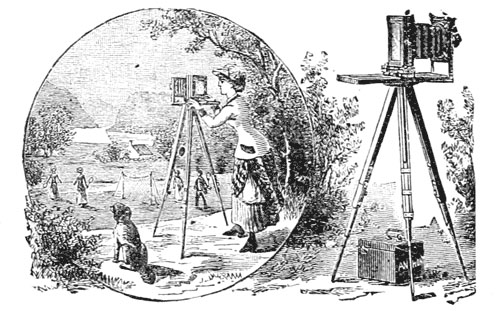![]()
Back in 1887, a photography instructor named Edward M. Estabrooke published a book titled Photography in the Studio and in the Field. It was “a practical manual designed as a companion alike to the professional and the amateur photographer.”
Filled with detailed information on how to practice photography with the equipment and technologies of the time, the book also contains interesting passages that describe how the world of photography was changing.
The passage, first discovered by Reddit user h4rpur, describes how improvements in camera technology were making photo-making easier and more accessible to people who practice photography “for amusement.” It’s the eternal evolution of cameras that we still see happening today.
Here’s the relevant excerpt from the lengthy book:
Now, however, by the introduction of the new process of dry plate work, all that was disagreeable has been done away with. The collodion, the silver-bath, the developer and fixing solutions—as things to be carried with you—are now of the past, and even the glass plates will soon be known no more as impedimenta to the amateur.

In place of the heavy Camera and plate-holders, we have now feather-weight constructions, that are no more a burden, but rather, ornamental objects, the possession of which and their use is more of a pleasure than otherwise. It is not surprising, then, that in view of these wonderful changes, the thousands who formerly practiced photography for amusement have increased to tens of thousands. […]
The bicyclist, too, goes out with a Camera, that may be attached to his wheel, and makes instantaneous views as he spins along the road, or dismounts and takes in some beautiful bit of scenery.

The boys, and also the girls, have seized upon this fascinating pursuit, and the gardens and conservatories have been converted into studios, where every member of the family, including the baby and the pet animals, have been posed, and their pictures bear witness to the triumph and delight of the young artists. Amateur photographers, male and female, may be found during the season at the summer resorts by the sea or at the breezy mountain house; wherever the well-to-do citizen takes his family for rest and recreation during the “dog days,” there will the tripod be set up and the Camera will record the topography of the vicinity.
For every one of these thousands of amateurs there is something to learn before he or she can succeed in producing a picture; to know how to make a photograph never comes by intuition, but must be acquired by study and practical experiment.
It’s interesting how some trends are still around even 128 years later. The modern equivalents of the cameras described may be things like entry-level DSLRs, mirrorless cameras, smartphones, and GoPros.
If you’re interested in reading the entire book, you can do so for free here. It’s also available as a Kindle book for $2.
P.S. If you thought this excerpt was interesting, check out this Hunter S. Thompson letter we shared a few weeks ago. The journalist talks about falling victim to Gear Acquisition Syndrome back in 1962.
from PetaPixel http://ift.tt/1DOchcS
via IFTTT







0 comments:
Post a Comment